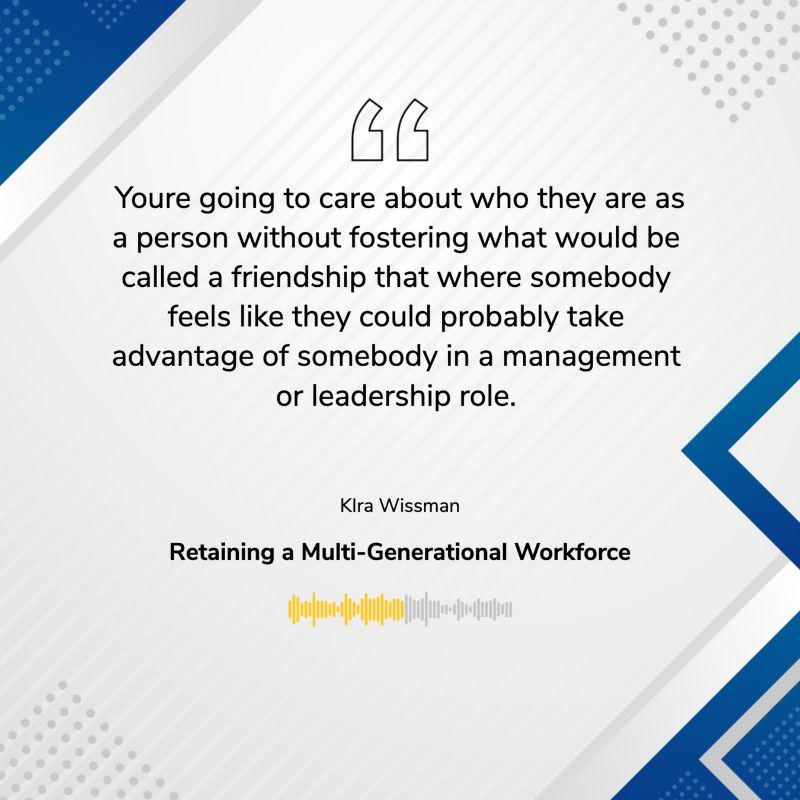John recently had the pleasure of interviewing Kira Wissman, a seasoned manager with a diverse team. Our conversation revolved around the challenges of motivating employees and achieving engagement and loyalty across different generations in the workforce. Here are some of the key insights from our discussion.
The Challenge of Generational Differences
One of the main topics we delved into was the challenge of engaging employees from different generations. With five generations currently in the workforce, finding common ground and effectively communicating with each age group can be a daunting task. Kira pointed out that even within families, it can be challenging to connect with people from different generations.
We discussed the stark differences between the older generation (boomers) and the younger generation (Gen Z) in terms of their working conditions and expectations. Boomers are accustomed to a more structured and less friendly work environment, while Gen Z prefers a more relaxed and flexible approach to work. This clash of working styles and expectations can create significant challenges for managers.
The Importance of Listening and Compassion
We both agreed on the importance of stepping back and listening to both sides, regardless of age. Managers need to understand what each employee wants out of their day and find common ground. We also touched on the impact of social media on human interaction and the need for compassion in the workplace.
Flexibility and Accountability
We concurred that flexibility is key in engaging younger employees. If organizations can offer flexible working arrangements, they can attract and retain younger talent. However, accountability is also important, as younger generations may have grown up with a mentality of unlimited chances.
The Power of Authenticity and Positive Reinforcement
Kira emphasized the importance of authenticity, humility, and giving credit to team members. She believes in providing positive reinforcement and acknowledging when someone does something well. By patting her team members on the back and fostering open communication, she has successfully brought together a group of people with different backgrounds and cultures.
We discussed the tendency to focus on mistakes rather than recognizing and praising accomplishments. Kira shared her approach of looking for what’s right and framing feedback in a constructive manner rather than simply pointing out errors. She believes in positive reinforcement and giving compliments, as it creates a better response and fosters collaboration.
The Role of Coaching Skills in Leadership
Kira touched upon the importance of coaching skills in leadership. She pursued a psychology degree to better understand the social aspects of the workforce. She acknowledges the lack of managerial training in people skills and the need for effective coaching.
The Dynamics of Virtual and In-Person Meetings
Kira shared her insights on the differences between virtual and in-person meetings. She highlighted how shy individuals tend to feel more comfortable in face-to-face interactions, as they don’t have the added pressure of seeing themselves on screen. She humorously mentioned the surge in the botox industry due to people scrutinizing their appearances during virtual meetings.
The dynamics that change when remote employees come together for in-person meetings. Kira’s company makes an effort to bring their remote team together a few times a year. She observes that some individuals who are outgoing online may become more reserved in person, while others who are shy online may become more engaged and outgoing.
The Importance of Inclusion
Kira concluded by mentioning that it’s essential for leaders to encourage participation and prevent anyone from feeling isolated during in-person meetings. She believes that a successful meeting is one where everyone feels included and connected.
I want to extend my thanks to Kira for her insightful contributions to this important conversation. Her experiences and insights provide valuable lessons for leaders navigating the complexities of a multi-generational workforce.













Comments